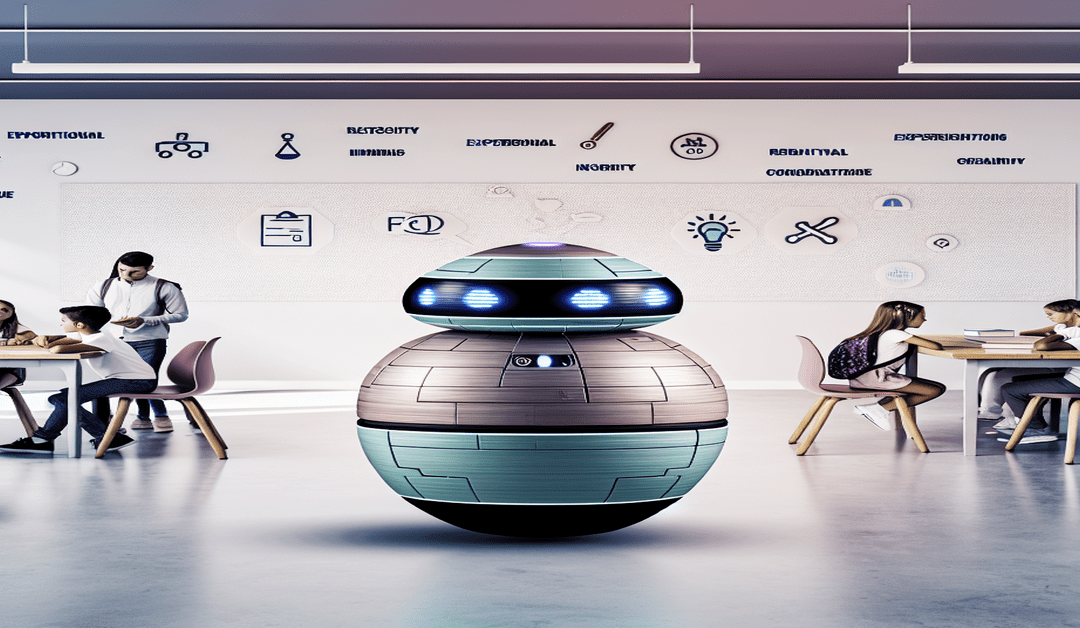The AI Conundrum: Balancing Innovation and Critical Thinking in Higher Education
As Artificial Intelligence (AI) continues to make strides in various domains, its impact on education has become a topic of much discussion. The advent of sophisticated language models like ChatGPT has raised concerns about the potential erosion of critical thinking skills among students. Universities now face the challenge of navigating this new landscape, ensuring that the integration of AI in academia does not compromise the fundamental goals of education.
The Double-Edged Sword of AI in Education
AI tools have the potential to revolutionize the way we learn and teach. They can provide students with instant access to vast amounts of information, generate coherent responses to complex queries, and even assist in the creation of original content. However, this very efficiency and effectiveness of AI have raised red flags among educators.
The primary concern is that students may become overly reliant on these tools, substituting their own critical thinking and problem-solving abilities with the outputs generated by AI. The ease with which AI can produce seemingly accurate and coherent responses may tempt students to take shortcuts, undermining the development of essential cognitive skills that form the bedrock of higher education.
Preserving Academic Integrity in the Age of AI
Another significant challenge that universities face is ensuring academic integrity in a world where AI-generated content is becoming increasingly sophisticated. The line between original work and AI-assisted output is blurring, raising concerns about plagiarism and the authenticity of student assignments.
Traditional methods of detecting plagiarism may prove inadequate in identifying AI-generated content. This calls for the development of new tools and techniques to distinguish human-authored work from machine-generated output. However, the rapid advancement of AI technologies means that any such detection methods will need to be continuously updated and refined.
Redefining Educational Goals and Strategies
The integration of AI in education necessitates a reevaluation of the very goals and strategies of higher learning. Universities must reaffirm their commitment to fostering critical thinking, creativity, and problem-solving skills among students. This may require a shift in pedagogical approaches, with a greater emphasis on tasks that demand human judgment, original thought, and analytical reasoning.
Educators may need to design assignments and assessments that challenge students to go beyond the information provided by AI tools. Encouraging students to question, critique, and build upon the outputs generated by AI can help cultivate critical thinking skills. Furthermore, incorporating collaborative learning and discussion-based activities can promote the exchange of ideas and perspectives, nurturing the development of original thought.
Establishing Guidelines for AI Use in Academia
To navigate the challenges posed by AI, universities must develop clear guidelines and regulations for its use in academic settings. These guidelines should set boundaries on when and how AI tools can be employed, ensuring that they supplement rather than replace human cognitive efforts.
For instance, universities may permit the use of AI for research and information gathering but require students to critically analyze and synthesize the information obtained. Strict policies against the submission of AI-generated content as original work should be put in place, with clear consequences for violations.
Moreover, universities should invest in educating students about the responsible use of AI. This includes raising awareness about the limitations and potential biases of AI systems, as well as the ethical implications of relying on machine-generated content. By fostering a culture of responsible AI use, universities can help students harness the power of these tools while maintaining academic integrity.
Collaborating for a Better Future
Addressing the challenges posed by AI in education is not a task that universities can undertake alone. It requires collaboration among educational institutions, technology providers, and policymakers. By working together, these stakeholders can develop best practices, share resources, and create a framework for the responsible integration of AI in academia.
Furthermore, ongoing research into the impact of AI on education is crucial. Studies that examine how AI affects learning outcomes, critical thinking skills, and student engagement can provide valuable insights for shaping educational policies and practices. By staying informed about the latest developments in AI and education, universities can make evidence-based decisions that prioritize student learning and development.
Conclusion
The rise of AI in education presents both opportunities and challenges. While AI tools have the potential to enhance learning experiences, they also risk undermining the development of critical thinking skills and academic integrity. Universities must navigate this complex landscape by reaffirming their commitment to fostering cognitive abilities, establishing guidelines for AI use, and collaborating with stakeholders to create a responsible and effective framework for AI integration.
By proactively addressing these challenges, universities can harness the power of AI to complement and enhance human intelligence rather than replace it. In doing so, they can ensure that higher education remains a bastion of critical thinking, creativity, and original thought in an increasingly AI-driven world.
#ArtificialIntelligence #HigherEducation #CriticalThinking #AcademicIntegrity #FutureOfLearning
-> Original article and inspiration provided by South China Morning Post
-> Connect with one of our AI Strategists today at Opahl Technologies

